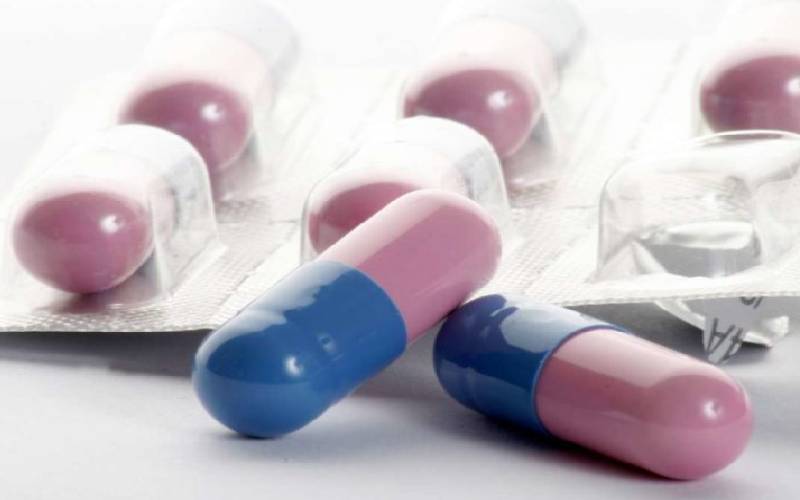
Noel Mudibo, 29, has had a childhood dotted with several health challenges. At the age of two, he had to have intestinal surgery. And as the doctors were doing preliminary examinations, they discovered that his eyes were not quite right. He needed to get them treated immediately, but due to financial constraints, his parents let that slide, instead, focusing on the bigger health issues he had. This decision would lead to Noel having challenges when it came to reading and writing.
In 2010, Noel was diagnosed with keratoconus in both eyes. Keratoconus is when the cornea bulges outwards and causes blurred vision. He needed to have corneal transplants which he got done in 2012 on the left eye and in 2013 on the right eye. All was well until three years later, another problem reared its head.
“In 2016 I developed lesions all over my body. I had blisters in my mouth, my tongue and groin area. I also suffered severe constipation and every time I would pass stool, would need to take strong painkillers to numb the pain I would experience in the process,” he explains.
Noel would also pass blood-stained stool and experience fevers, general body weakness and fatigue.
“Whenever I swallowed hard foods, I felt a lot of pain. My skin started becoming pale and later on, brownish spots appeared all over my body,” he recalls.
At this point, he was in college and people would often say the lesions are HIV-related conditions.
“I was often in so much pain so I lived on painkillers. When it became unbearable, I decided to get checked by a doctor. After running a series of tests, they discovered that I had a rare condition called pemphigus vulgaris.
According to Dr Caroline Ndarathi, a consultant dermatologist, the immune system of people with this condition produces autoantibodies which target and destroy structures that hold the skin cells together consequently leading to the formation of blisters.
“Normally, our immune system makes antibodies in response to an infection and they don’t attack our own body system. But this is not the case with people with this condition,” she says.
Noel was then put on a combination of steroids to try and manage the condition. “I started to use them and felt at least better but not completely healed. I still had frequent severe flare-ups. That would keep me grounded for several days, often keeping me out of class and normal daily routine.”
Pemphigus vulgaris is characterised by painful erosions (raw areas) affecting the mucous membranes lining the mouth, nose, throat and genital area as well as the skin.
“Involvement of the oral cavity and oesophagus can lead to pain when eating or swallowing or gum problems. Sometimes, oral involvement may proceed by 4 to 6 months. Some patients may lack skin involvement. On the skin, the blisters tend to be fragile and the outer surface breaks away easily even when clothing adheres to the skin. These areas may coalesce to form large painful areas of skin detachment,” Dr Ndarathi says.
To diagnose this condition, a dermatologist takes a small sample of the skin from a fresh blister and observes it under the microscope.
Blood tests may also be conducted to detect circulating autoantibodies.
Stay informed. Subscribe to our newsletter
Noel went online to look for people like him to connect with. “I saw testimonies of people who have had Pemphigus. I read accounts of some who went into remission and others who lived with it. I came across the International Pemphigus and Pemphigoid Foundation (IPPF) and joined.”
When he discovered that there was no local support group, he decided to form one on social media and called it The Centre for Research Information and Management for Pemphigus and Pemphigoid.
“I would read articles on the condition on the IPPF website and share the findings with the group in Kenya. This would help them understand their condition much better and know how to manage it,” he says.
Living with it
Managing the condition involves pain management, oral and skincare.
“In regard to definitive management, immunosuppressive medication is important as this condition does not go away by itself. The choice of medication used will be determined by the doctor and/or presence of any other underlying medical condition,” Dr Ndarathi adds.
Other specialists may be involved for patients with oral, genital or eye problems.
There’s currently no local prevalence studies on this condition. Pemphigus vulgaris is a rare condition reported to occur worldwide and the prevalence is dependent on the population affected.
Generally, the incidence varies between 0.1 and 3 cases per 100,000 people per year. People of Jewish ancestry and inhabitants of India, Southeast Europe and the Middle East have the greatest risk of pemphigus vulgaris.
The average age of onset is between 40 and 60 years of age.
Childhood involvement is rare and males and females are equally affected.
Doctors recommend that patients avoid hard, spicy, hot or fizzy drinks as they irritate the oral lesions. A balanced diet is generally recommended.
“Early referral to a dermatologist is advised as pemphigus vulgaris is a serious and potentially life-threatening condition if not treated early and effectively. Patients should ensure that they keep their doctor appointments and not stop the medication abruptly as it will lead to disease recurrence,” Dr Ndarathi, says.
Noel is currently pursuing his passion for social work and writing.
He has recently finished a children’s book and is looking to write another one.
Is he at high risk of contracting Covid-19?
“I have been told that I am especially if my immunity is low. I adhere to directives like being indoors to keep away from infections. I can’t eat salty foods, and due to my condition, I cannot participate in sports as my skin peels off easily. I am living a very expensive and delicate life.”
 The Standard Group Plc is a
multi-media organization with investments in media platforms spanning newspaper
print operations, television, radio broadcasting, digital and online services. The
Standard Group is recognized as a leading multi-media house in Kenya with a key
influence in matters of national and international interest.
The Standard Group Plc is a
multi-media organization with investments in media platforms spanning newspaper
print operations, television, radio broadcasting, digital and online services. The
Standard Group is recognized as a leading multi-media house in Kenya with a key
influence in matters of national and international interest.
 The Standard Group Plc is a
multi-media organization with investments in media platforms spanning newspaper
print operations, television, radio broadcasting, digital and online services. The
Standard Group is recognized as a leading multi-media house in Kenya with a key
influence in matters of national and international interest.
The Standard Group Plc is a
multi-media organization with investments in media platforms spanning newspaper
print operations, television, radio broadcasting, digital and online services. The
Standard Group is recognized as a leading multi-media house in Kenya with a key
influence in matters of national and international interest.





